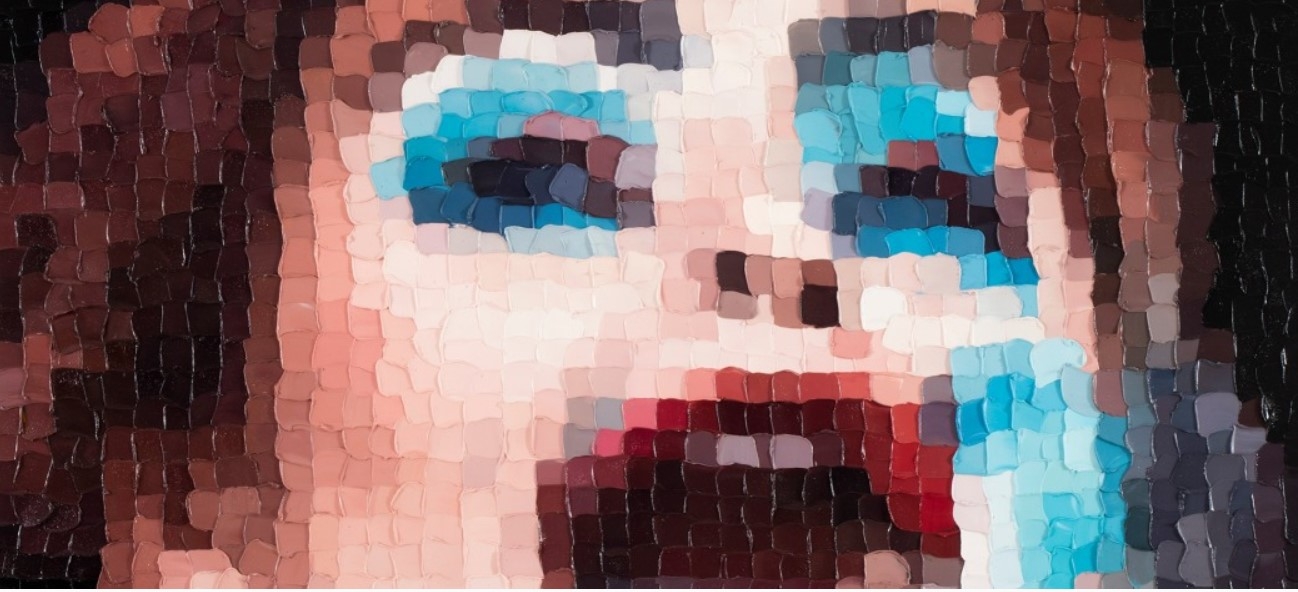Lukkarinen then intuitively chose the ones that worked best as paintings. The persons in the portraits are not real people but composites. Even so, without pictures of real people to work with, the AI system could not have learned to create credible characters. Paradoxically, then, people are present and yet absent at the same time. Lukkarinen has described how he formed an emotional bond with the AI-generated characters. Especially after studying the pictures carefully and spending time in their company, they become close, and their presence seems tangible. The artist strives to relate to them sensitively as if they were real people. Striving to connect with their human side is also the reason he paints them.
The exhibition additionally features a series of works based on AI-generated characters composed from portraits in New York’s Metropolitan Museum of Art. For many years, Lukkarinen has taken a special interest in the connection between social media and historical portraiture. The combination of artificial intelligence and art history is indeed a fascinating one, as both lend themselves to the study of classical art history concepts, especially the laws governing perception.
Humans read faces quickly and accurately – this is a typical feature of our species. The same mechanisms are deployed when we look at human faces generated by artificial intelligence. The automatic reaction that many people have is to push them away because there is something unsettling or even menacing about them. Their uncanniness could alternatively be regarded as interesting, perhaps even beautiful. Different artificial intelligences each have their own unique personalities, which makes them easy to humanize. AI-generated people can thus be treated with tenderness, as Lukkarinen has done. After all, artificial intelligence does its best to understand humans and humanity as strange and wondrous that sounds. We could return the favor by trying to understand AI in the same way as it tries to know us.
Lukkarinen graduated from the Academy of Fine Arts in 2001. He has held numerous solo exhibitions and participated in group exhibitions in Finland and internationally. His work is found in major public collections, including the Museum of Contemporary Art Kiasma and the Saastamoinen Foundation. The artist is based in Helsinki.




